The Story of Culture and Arts
- Image resource of Korean history
- Documents from History TextBooks
- Culture & Art Stories from Korean History
- Culture & Art Stories from Korean History - Korean
- National Institute of Korean History
- History net
- About the site
- Introduce
-
Numerous topics related to Korean culture and art are mentioned in middle and high school national history textbooks, but most of them are briefly described by era, making it difficult to understand their concepts, transition processes, and characteristics.
<Culture & Art Stories from Korean History> produces and provides video materials based on expert commentary on the flow, change process, characteristics and characteristics of each major topic in the field of culture and art in Korean history.

Scenario
The need to write things out these days has significantly decreased.
However, whenever we want to write down a favorite quote or passage, or perhaps convey our gratitude to someone, we do this in handwriting as an expression of our feelings.
Our ancestors did the same thing. In each character lives the heart and soul of the writer. This is why the writing implements used were considered precious.
Tools to write and draw!
Stationery of old was regarded as much more than simply stationery. Here is their story.
A Scholar’s Dearest Friends – Munbang sau
Have you ever heard the expression, “The Four Treasures of the Study?”
Like four friends to an old Confucian scholar who needed to read and write, the term “munbang sau” alludes to the four items that were always at the scholar gentleman’s side. These four items are paper, brush, ink stick, and inkstone.
Although Korea learned paper-making from China, Korea developed its own style and techniques of manufacturing paper. This traditional Korean paper is called hanji. The main ingredient in hanji is bark of the mulberry tree.
“Boil and bleach the bark of the mulberry tree like so. The fibers will intertwine to create hanji. The fibers are long, and if they tangle nicely, the paper will be sturdy.” Jang Eungyeol, Hanji Master (韓紙匠) / Gangwon-do Intangible Cultural Asset No. 32
The process of floating the paper pulp is called choji. Swishing a screen back and forth repeatedly in the pulp mixture, sheets are lifted out one at a time. The quality of the resulting paper depends on the skill of the choji technique.
The paper is smooth but durable, emitting a beautiful white sheen. Hanji was well loved in the Goryeo period. The secret to obtaining paper like this is dochim.
“You’re pounding it rather forcefully during the dochim process. This strengthens the paper, making it more likely to last for a long time.” Jang Eungyeol, Hanji Master (韓紙匠) / Gangwon-do Intangible Cultural Asset No. 32
Looking at thousand-year-old paper and seeing it in such good condition is enough to prove the excellence of hanji.
The brush is a writing instrument that is dipped in ink and used to write or draw. Generally, brush hairs were made from animal fur, such as from weasels, rabbits, roe deer, goats, and other mammals. What hair was used depended on the brush’s purpose, whether it was for painting flowers, painting portraits, writing calligraphy, etc.
The quality of the brush differed depending on which hairs were chosen. This is why the selecting and cutting of the hairs is very important.
“The outer hairs are extremely soft and of good quality. Yet they’re firm. The outer hairs are firm and slightly curved. The simso are also firm, but a bit shorter and somewhat rough.” Jeon Sanggyu, Master Brush Maker (筆匠) / Seoul Intangible Cultural Asset No. 5
Strong inner brush hairs and soft outer brush hairs complete the delicate yet resilient brush.
“When you write, the brush should move along the page smoothly, with the top part moving ever so slightly. If only the tip lies flat and not the top, it won’t write properly.” Jeon Sanggyu, Master Brush Maker
A meticulously handcrafted brush!
Historical records and masterpieces of their time were born at the end of a brush.
The ink stick is another item used when writing or drawing. To make ink, you must pour water into an inkstone and then grind down an ink stick on the wet stone.
The black ink contrasts starkly with white paper. The various shades of the ink, which depend on the pressure of the brush strokes, change the mood of a work. An ink stick is made by burning pine pitch with hempseed oil, paulownia tree oil, bean oil, or sesame flower oil, and then mixing the soot with glue.
“To make one 8 cm pine-pitch ink stick, we must burn an entire 30-year-old pine tree. The roots, trunk, even leaves, all must be burned.” Han Seongmook, Master Ink Stick Maker (墨匠) / Expert in the art of traditional ink stick making
Ink stones - its color does not fade with the passage of time. No matter which medium you apply it to, it does not corrode!
This is why we can still appreciate writing and paintings hundreds, even thousands, of years after their creation.
The ink stone is the tool that turns an ink stick into ink. Water is poured into the ink stone, and the solid ink stick is gradually ground up. The small particles mix together to form ink.
Inkstones were made from various materials, including clay, jade, silver, bronze, metal, and wood, but the most common material was stone. Of these inkstones, the most renowned were the black “Nampo inkstones” from present-day Boryeong in Chungcheongnam-do.
“A good stone for making ink stones is baekunsangseok. I’ll tap on it for you. If it makes a bright, metallic sound, and there will be no cracks when you cut it, When you grind an ink stick on a good ink stone, it can be ground so finely that it gives the ink a sheen. Also, the ink won’t dry out after 15 days, or even longer.” Kim Jinhan, Master Ink Stone Sculptor (硯匠) / Chungcheongnam-do Intangible Cultural Property No. 6
Ink stones are works of art, admired for their diverse sculpted designs. Due to its ability to hold its shape despite repeated use, it serves as a tool for instilling discipline in the scholar. That is why when you look at an ink stone, you can tell what kind of person the owner is.
This plain, unadorned ink stone was used by Joseon’s King Yeongjo for his daily writing. On the back of the inkstone the king recorded the eight most important events of his life, from his birth to his 70s.
自醒翁七十一歲 望八試眼年表書 - Using a chronological table to test a 71-year-old man’s eyesight
“Jaseongong” was King Yeongjo’s nickname in his later years. The king used a large ink stone without designs or flourishes. This goes to show just how much the king practiced frugality throughout his life.” Kim Jina, Academic Researcher / Suwon Hwaseong Museum
金珠在前視如泥 / Though gold and gems be placed before me, I look upon them as dirt.
視猶不見況更擲 / I refuse to even acknowledge them, let alone cast them aside.
松煤楮膚有何好 / Yet, I find pleasure from only paper and ink.
乃獨令吾手未釋 / I find myself continuously grasping for it.
此心有欲皆不廉 / If there is lust in one’s heart, will they never be pure?
於此戀戀無奈癖 / My hands cling tightly to them out of habit.
- Park Eun, Sokdong munseon (Supplementary Anthology of Korean Literature)
“The Four Treasures of the Study,” writing instruments that held a deep meaning to our ancestors!
In the late Joseon dynasty, love and admiration for these items grew. This led to the “munbang cheongwan“ trend.
This style of artwork was also used by the royal court and nobility as decorative paintings. Not just implements, but lifelong friends that revealed who you were and guided you, the Four Treasures of the Study!
Do you have any precious and treasured writing implements on your desk?
What would be your four treasures?
[Epilogue]
Must-Know Facts on Culture and Art in Korean History
1. Our ancestors called the paper, brush, ink stick, and ink stone he Four Treasures of the Study/munbang sau and considered them friends.
2. The ink stick was ground on the [ink stone] to create ink, in which a [brush] was dipped and then applied to paper.
3. In the Joseon Dynasty, there was a trendy pursuit called munbang cheongwan where people collected and admired stationery and calligraphy paintings.
Life & Folklore
17 films-
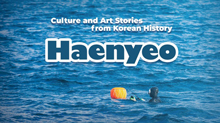 Haenyeo, female divers in Jeju08:52
Haenyeo, female divers in Jeju08:52 -
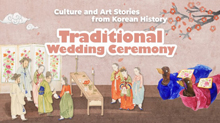 Traditional Wedding Ceremony08:22
Traditional Wedding Ceremony08:22 -
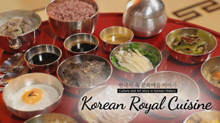 Korean Royal Cuisine08:22
Korean Royal Cuisine08:22 -
 Gat and Traditional Headwear of Korea08:48
Gat and Traditional Headwear of Korea08:48 -
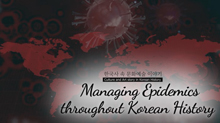 Managing Epidemics throughout Korean History08:48
Managing Epidemics throughout Korean History08:48 -
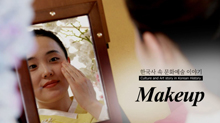 Makeup07:52
Makeup07:52 -
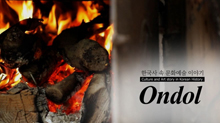 Ondol, Korea's Underfloor Heating System08:40
Ondol, Korea's Underfloor Heating System08:40 -
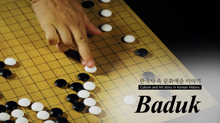 Baduk08:32
Baduk08:32 -
 Four Treasures of the Study09:34
Four Treasures of the Study09:34 -
 Farming Implements09:12
Farming Implements09:12 -
 Coming-of-Age Ceremony08:41
Coming-of-Age Ceremony08:41 -
 Ginseng08:44
Ginseng08:44 -
 Tobacco08:27
Tobacco08:27 -
 Kimchi08:37
Kimchi08:37 -
 Relief Crops08:37
Relief Crops08:37 -
 Korean Currency09:28
Korean Currency09:28 -
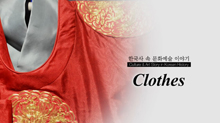 Clothes08:20
Clothes08:20

